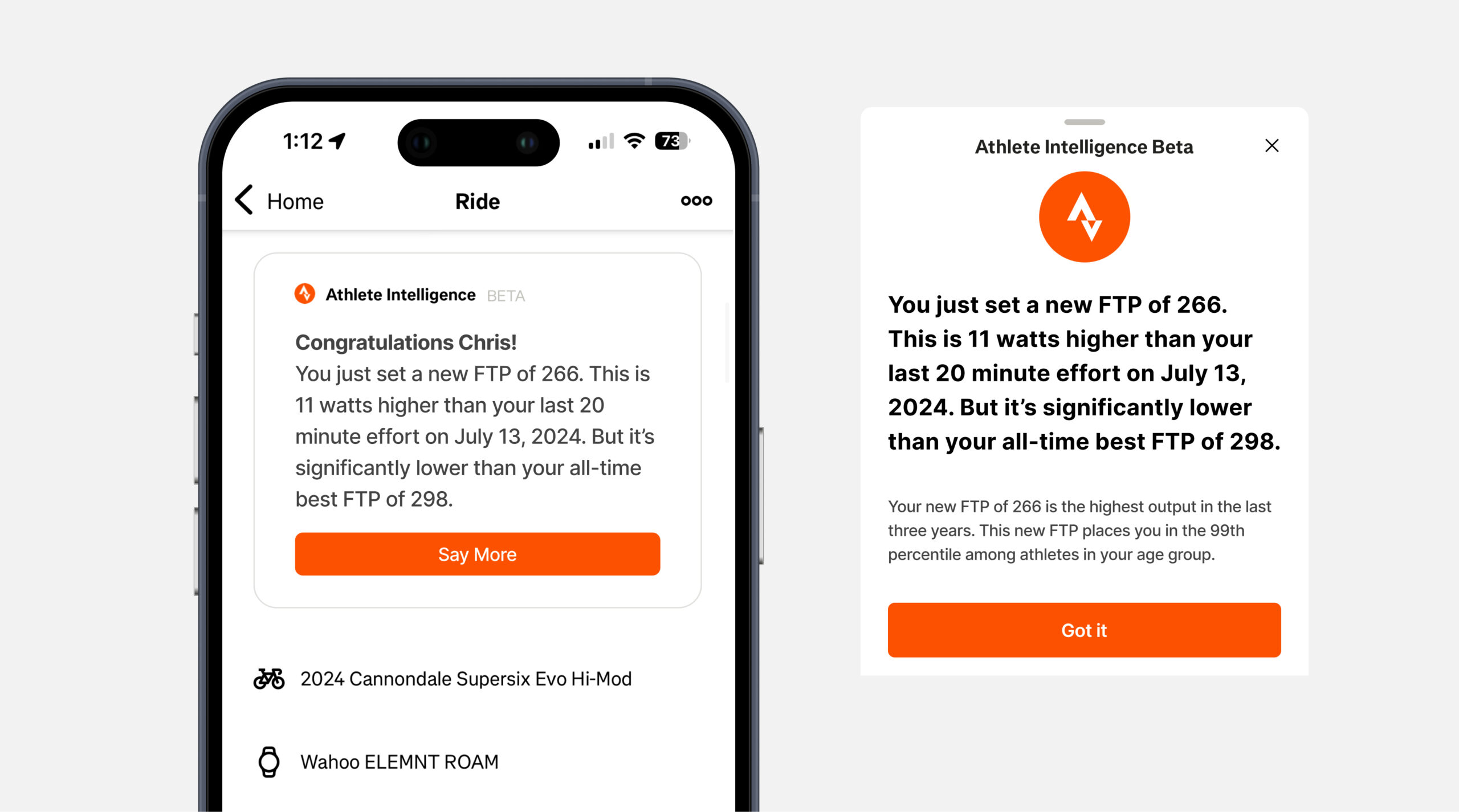
How can Strava’s Athlete Intelligence help me get faster?
That’s the question I’ve been asking myself since Strava announced the feature. The social network and app that allows users to track and analyze their physical activity introduced Athlete Intelligence in early October.
From the press release on Oct. 2, 2024, “Athlete Intelligence provides personalized insights based on your activity data so you can understand what your stats say about your performance and make the most of every workout.”
Athlete Intelligence sounds promising — but is it?
I’ve been a Strava customer since 2014. Over the past decade, I’ve witnessed the product’s steady improvement. When they introduced a subscription model, I was quick to sign up.
During those initial years, my heart rate monitor was the sole accessory I synced to the app. However, since then, I’ve added power meters to all my bikes. Training with power metrics provides a more objective way to enhance and understand your training.
Fast forward to the present, Strava remains one of the few apps I consistently open each day.
Rewording content doesn’t help me
The first thing I noticed was that Athlete Intelligence was rewriting my ride title and description, sprinkling in phrases such as “Consistent power and speed” or “Your varied training is paying off.”
One example of this is a recent ride titled “FTP test.” Athlete Intelligence displayed the summary, “Your FTP test showed higher power and effort than usual, with time spent in VO2 and Threshold zones.” But I already knew this. It was a ride where I pushed the lap button on my Wahoo head unit and stopped it after the test. I went as hard and as fast as I could for 20 minutes. Among competitive cyclists, the 20-minute effort is used to set your FTP, or functional power threshold. That number is then used to set training zones so athletes can train more efficiently.
I’ve performed this test multiple times per year for several years. Strava has this test and thousands of hours of my training data that they could use to give me a better understanding of my ride. “With more than 10 billion activity uploads on Strava, the data illustrates a unique picture for each user and represents their authentic effort,” the original press release states.
It goes on to say, “By distilling it to be more conversational, the goal of this feature is to help users better understand their performance.”
Unfortunately, this vague conversational content doesn’t help me understand my ride any better than the already easy-to-understand bars and graphs that users already have.
The potential of an AI coach in your pocket
One possible reason for this awkward launch could be that Strava has more ideas in the pipeline.
With millions of user data points, such as age, sex, and cycling metrics like speed, distance, cadence, and training volume, as well as power and heart rate data available to train their AI, showing the user how they can become faster could be possible with AI.
In early December, Strava made an update to the app. The product team is moving in the right direction - but taking only marginal steps forward.
On a recent ride, Strava Athlete Intelligence said, “Impressive short burst performance, hitting 5-second power record.” That’s great. But I didn’t set a new power record.
Strava says, “Subscribers can see how they are progressing relative to the past 30 days. Athlete Intelligence spots their gains and patterns, giving them the big picture of their active journey without any confusion.” Why are they only pulling the last 30 days of data?
If Athlete Intelligence has access to all my data, they could be moving towards something like this:

“Congratulations, Chris, you just set a new FTP of 266 on this ride. You averaged 280 watts for your 20-minute test and set new personal bests on the segments 8th Street to Dirt, and Highlands to Motorcycle Lot.”
This content would both motivate me by telling me I set personal bests and validate my training by informing me I improved my functional threshold power. It would be like having a personal coach.
Strava’s Athlete Intelligence doesn’t help me or the peloton get faster.
Strava CEO Michael Martin said at this summer’s Camp Strava event, “Strava should be leading the way. We should be the lead-out rider blocking the wind, creating a slipstream, so the whole peloton will move faster and more efficiently.”
I understand I’m only one of the user personas the Strava Product Team has to build for. Other customers might find a rewritten title and description to be useful, or even delightful. But if the goal is to help the peloton move faster — Athlete Intelligence has a ways to go before this becomes reality.